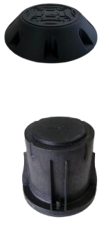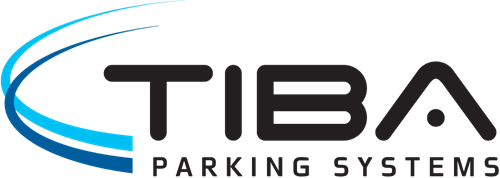Urbiotica: Choosing the Right Technology for Smart Cities - IoT Sensors vs. Cameras

Smart Cities leverage cutting-edge technology to enhance citizens' lives,
particularly in areas like urban mobility. When it comes to optimizing traffic and
parking management, a common question arises: should we rely on IoT sensors or
camera-based detection systems?
Each detection method offers unique advantages depending on the specific needs
of a project. But which one is more effective, cost-efficient, and reliable for
managing urban mobility and parking? Do they employ the same technology, or are
their capabilities different?
At Urbiotica, we aim to clear up these doubts. This article will first explore IoT
sensors, how they function, and their benefits. Then, we’ll delve into the workings
of detection cameras. Finally, we’ll compare both options to help you make an
informed decision.
Understanding IoT Sensors and their functionality
IoT sensors, such as U-Spot, are designed to detect vehicles in individual parking
spaces, monitoring real-time occupancy with instant data on availability.
Urbiotica offers two versions of these sensors:

- U-Spot Surface: Installed directly on the pavement, allowing for quick setup without excavation. Ideal for indoor and off-street parking, rooftops, modular structures, and projects focused on reducing installation costs.
- U-Spot Buried: Installed underground, providing a more discreet and protected solution. Ideal for areas with a high risk of vandalism, public spaces with specific regulations on surface elements, and regions with frequent snowfall, where the sensor remains protected from snowplow damage.
Key features of IoT sensors:
- Real-time vehicle detection: With over 98% accuracy, these sensors reliably detect when a vehicle occupies or vacates a parking space, regardless of weather conditions such as rain, snow, or dust.
- Weather resistance: Unlike other technologies, IoT sensors maintain functionality even in challenging climates, proving their reliability in cities like Burlington, Doha, or Vienna.
- Easy installation & zero maintenance: They are quickly installed and require no on-site configuration, as all management is handled remotely.
- Over 10 years of lifespan: Cloud-based detection minimizes energy consumption, ensuring a long service life with no maintenance required.
How detection cameras work
On the other hand, detection cameras, such as U-Spot VISIO, monitor parking
space occupancy by capturing images and processing them using software based
on Artificial Intelligence (AI) and Deep Learning.
These cameras can cover up to 50 parking spaces with a single device, but they
require installation at specific heights with clear visibility.
Key features of U-Spot VISIO:
- AI-powered image analysis in the cloud: Works with any market-standard IP camera with a minimum resolution of 2MP (1920×1080) and FTP upload capability. It operates with a minimum illumination condition of 10 lux.
- GDPR compliance: The software adheres to the General Data Protection Regulation, ensuring privacy.
- High detection accuracy and vehicle rotation tracking: Instantly detects occupancy changes with over 99% reliability. It also measures parking duration and can cover up to 50 outdoor spaces.
- Easy integration with other systems: The sensors integrate with any existing platform, app, or parking management system.
IoT Sensors vs. Cameras: Which is the best option?
Both IoT sensors and detection cameras play a crucial role in managing parking and
urban mobility. The choice between them depends on the specific requirements of
each project.
IoT sensors offer distinct advantages, particularly in areas with scattered parking
spaces or where visibility is obstructed by trees or other elements. Their
independence from gateways and ability to operate without a dedicated power
supply make them an ideal solution in certain environments. These features not
only simplify installation but also contribute to the cost-effectiveness of parking
solutions.
Detection cameras, on the other hand, can be more economical in areas with good
visibility, as a single camera can monitor multiple parking spaces without needing
an individual sensor in each. However, their performance may be affected by
physical obstructions.
In many cases, the optimal solution may be a combination of both technologies:
deploying cameras where visibility is clear and sensors where it is not.
At Urbiotica, we understand that every project is unique. Rather than
recommending a one-size-fits-all solution, we provide tailored advice based on over
15 years of experience implementing smart parking solutions worldwide. Whether
you opt for sensors, cameras, or a combination of both, the decision should always
be driven by the specific needs and goals of your Smart City project.
About Urbiotica
Urbiotica was born in 2008 with the mission to bring the most innovative technology to society through urban environments. Its vision is to help cities become more manageable, efficient, and sustainable, improving the quality of life of its citizens.
At Urbiotica, we focus on developing reliable IoT technologies that enhance urban mobility. Our sensors are rigorously tested to deliver high performance and accuracy in parking space management, ensuring efficient and dependable solutions.




Comments
There are no comments yet for this item
Join the discussion